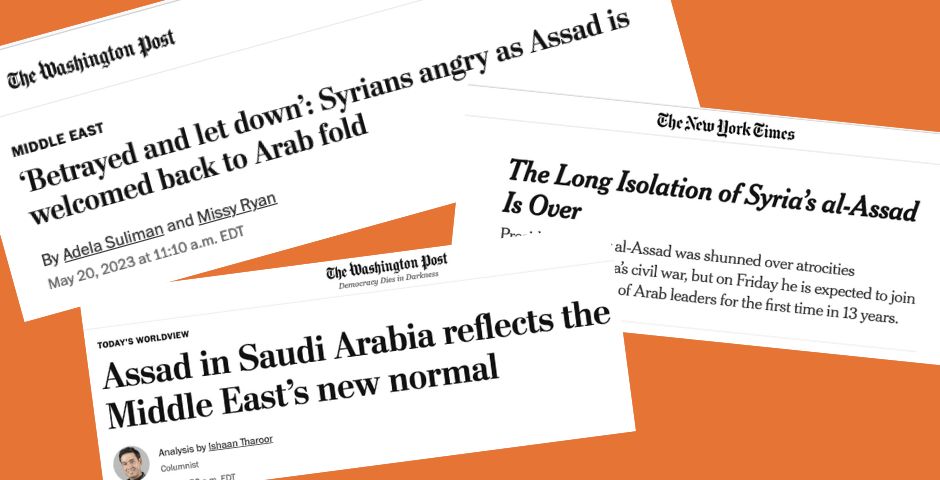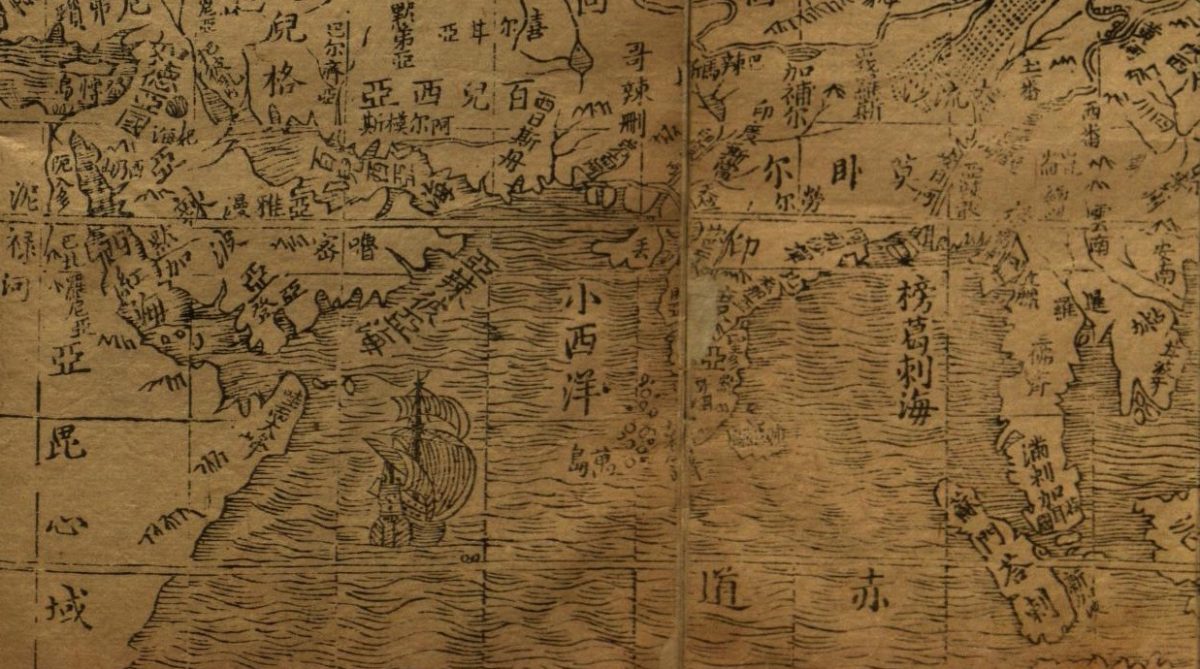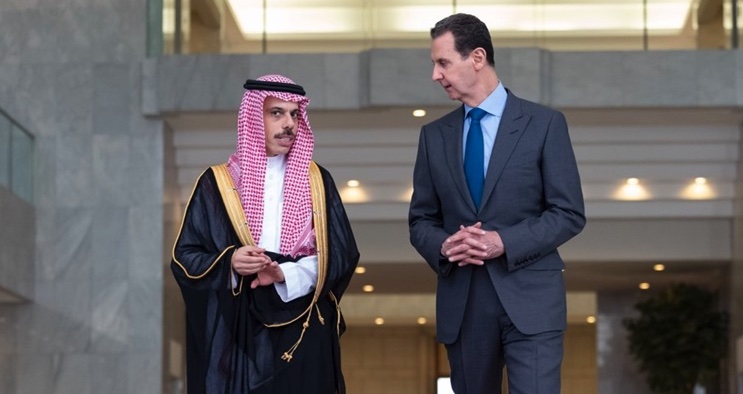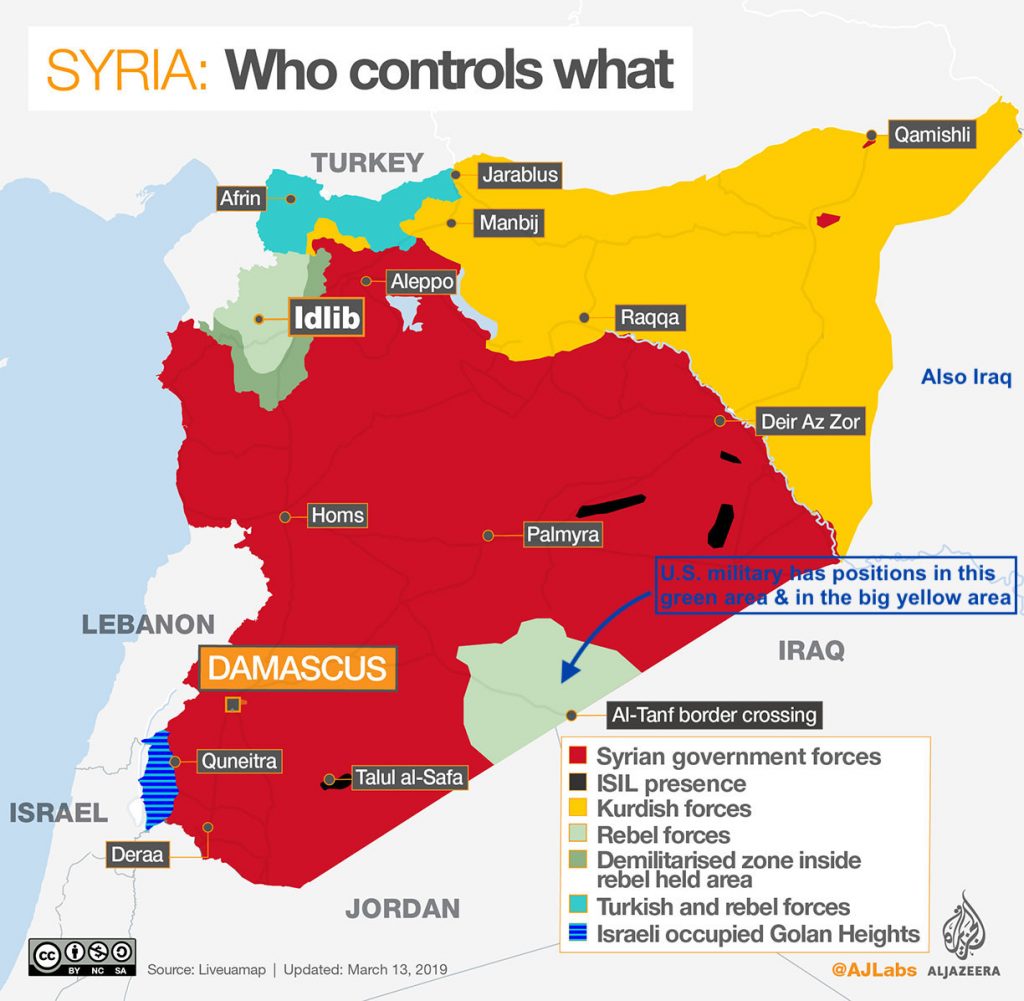The Western corporate media that for 12 years have cheerled the brutal regime-change project in Syria are still sore about the fact that the project failed and that the other Arab states have agreed to reinstate Syria into the Arab League. So in what they’ve been publishing about Syria in recent days—whether “news” or “opinion”—they still clearly embody the deeply one-sided way they have been “covering” Syria for many years now.
(Other voices can be found—if you know where to look. I’ll come to one of them a little lower down here.)
The story in today’s WaPo that purported to tell us how “Syrians” feel about Pres. Bashar al-Asad’s participation in last Friday’s Arab League summit was a classic. “Syrians”, the headline tells us magisterially, “feel anger, hurt as Assad is welcomed back to Arab League.” But no attempt was made by the two reporters bylined there to, um, actually go to Syria and ask that majority of Syrians who live in areas under the government’s control. Instead, they are writing with no dateline, that is, presumably working the phones and the WhatsApp lines from Washington, to the three named sources whom they quote. One of those sources is described as currently located in Qatar, one in Germany, the other, not located.
The reporters make a couple of references to them as “Syrian activists“, a deliberately vague descriptor that is usually understood to mean “Syrian pro-regime-change activists”… But then they also, several times, build on those quotes to conclude that “Syrians” (meaning, presumably, all Syrians) feel that same way.
That is exactly how, through lazy writing based on a barrow-load of wishful thinking, pro-war propaganda gets ever more deeply embedded into the minds of readers. It really makes you wonder. If all “Syrians” feel exactly that same way, how on earth did the Syrian government manage to survive the 12-year-long regime-change campaign?
Continue reading “Western corporate media huff on about Syria’s survival, reintegration”



